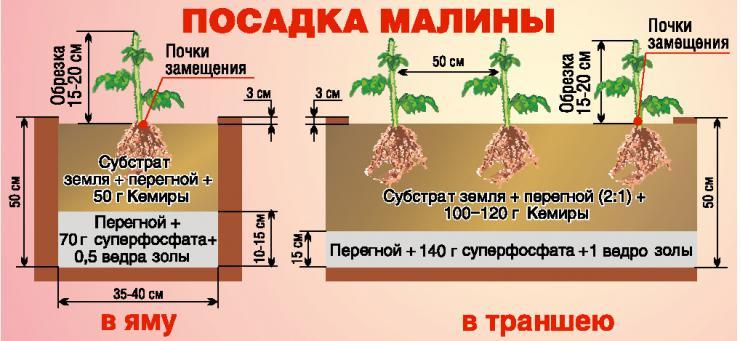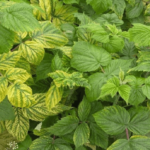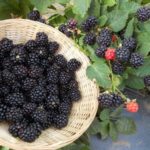Gardeners appreciated the Kalashnik raspberry several decades ago. The variety was bred by Moscow breeders in the nineties of the last century. Sweet and large fruits appear on the bushes in the fall, when others have already faded. Residents of many regions of the country plant berries on their plots. But in order to get high yields, you must follow the rules of plant care.
Description and brief description
Kalashnik is classified as a remontant variety. Raspberries begin to ripen in August.The harvest is harvested until frost. The fruits are juicy and have a small number of seeds. The color of the berries is a rich red hue. Gardeners harvest almost 3 kilograms of harvest from 1 bush.
Other characteristics of the Kalashnik raspberry:
- The branches of the bush reach 2 meters in height.
- The root system is well developed.
- The spikes are evenly spaced.
- The berries are concentrated in the upper part of the shoots.
- The weight of the fruit is about 3 grams, the shape is round, slightly elongated in the shape of a cone.
- The smell is not sharp, weakly expressed.
The shrub is taking root well. The berries remain juicy for a long time.
Advantages and disadvantages of Kalashnik raspberries
The variety has many advantages. It is not without reason that branched shrubs are often found in garden plots and summer cottages. But it is also necessary to take into account the weaknesses of the plant.
Agronomists do not consider late fruit appearance to be one of the strengths of the variety. But the opportunity to enjoy sweet berries when the weather is already turning towards winter attracts many gardeners.
Planting a crop
Autumn and spring are suitable for planting Kalashnik raspberries. The choice of season is influenced by the weather conditions of the area. The optimal period of Indian summer is September or early October. Advantages of the pre-winter rooting method:
- High humidity at low air temperatures has a positive effect on the survival rate of garden crops.
- The seedling will take root before frost and will begin to develop as the weather warms up.
- If you plant Kaalashnik raspberries in the fall, the harvest will appear the next year. Placing bushes in the soil in the spring shifts the timing of fruiting.
Pay attention to the type of shoots. An open root system requires more time to acclimatize to soil conditions. For shrubs, choose sunny areas on the south side of the garden.
Kalashnik raspberries are not recommended to be planted in areas where nightshade crops previously grew. Bacteria that are dangerous to the plant may remain in the soil.
Subtleties of caring for the variety
Caring for raspberries is simple. It is necessary to adhere to standard standards developed for the culture.
Watering, fertilizing and pruning
Caring for Kalashnik raspberries consists of several processes:
| Stages | Description |
| Irrigation | Kalashnik raspberries are watered throughout the season. Stagnation of water must be avoided to avoid rotting of the root system. A layer of peat or straw placed on top will retain a sufficient amount of moisture in the soil. During the growing season, weekly irrigation sessions are enough for the shoots. In hot weather, the frequency of watering is increased. |
| Fertilizer application | The remontant variety loves nitrogen and potassium. The preparations added during planting last for 3 years. But in the spring the soil is further enriched. Up to 100 grams of funds are required for each square meter.
As the berries ripen, mullein is added to the soil. In autumn, a 20-centimeter furrow is made around each bush, into which superphosphate (60 g) and potassium salts (40 g) are added. |
| Trimming | Regularly remove excess root growth. In spring, part of the shoot is cut down to living buds. Before wintering, they get rid of dead wood. |
If you follow all the recommendations, the Kalashnik raspberry will quickly take root on the site.
Preparing for winter
They begin to prepare for cold weather 2 weeks before the frosts promised by weather forecasters. If the goal is only autumn fruiting, the shoots are completely cut out. To obtain berries in the spring, some of the stems are left untouched. In harsh climates, branches are bent to the ground to protect them from freezing.
Plant diseases and pests
Raspberry Kalashnik is resistant to many diseases. But immunity sometimes decreases due to poor conditions - lack of moisture or sunlight. The most dangerous diseases are curl, characterized by the proliferation of aphids, growth or mosaic.
To protect against fungal spores, plants are treated with Bordeaux mixture. The shoots are sprayed with a 1% solution before and after flowering. Folk remedies help repel pests. To do this, use infusions of plants with a strong odor - wormwood, garlic or onion.
Raspberry propagation
For planting Kalashnik raspberries on the site It is better to order seedlings from a nursery. For further breeding, you can use your own material. Shoots from the roots will do. To obtain a harvest, leave up to 8 branches. The shoots are dug up and transplanted to another place.
Another method involves cutting rhizomes. The underground part of the plant is cut into several strips about 15 centimeters long. The shoots are placed in small depressions in the ground and sprinkled with earth. The seedlings are moved to a new place of residence next year.
Harvest and storage
It is recommended to pick Kalashnik raspberries early in the morning when there is no precipitation. The berries are placed in a shallow container. The container is not placed in the sun. If the fruits are planned to be transported to another place, the fruit stalk is left behind. Store the crop at low temperatures.
The remontant variety attracts garden owners with its unpretentiousness and strong immunity. Rooting Kalashnik raspberries usually goes without problems. Delicious berries are in demand in the consumer market, despite the abundance of new offers of modern selection.






















